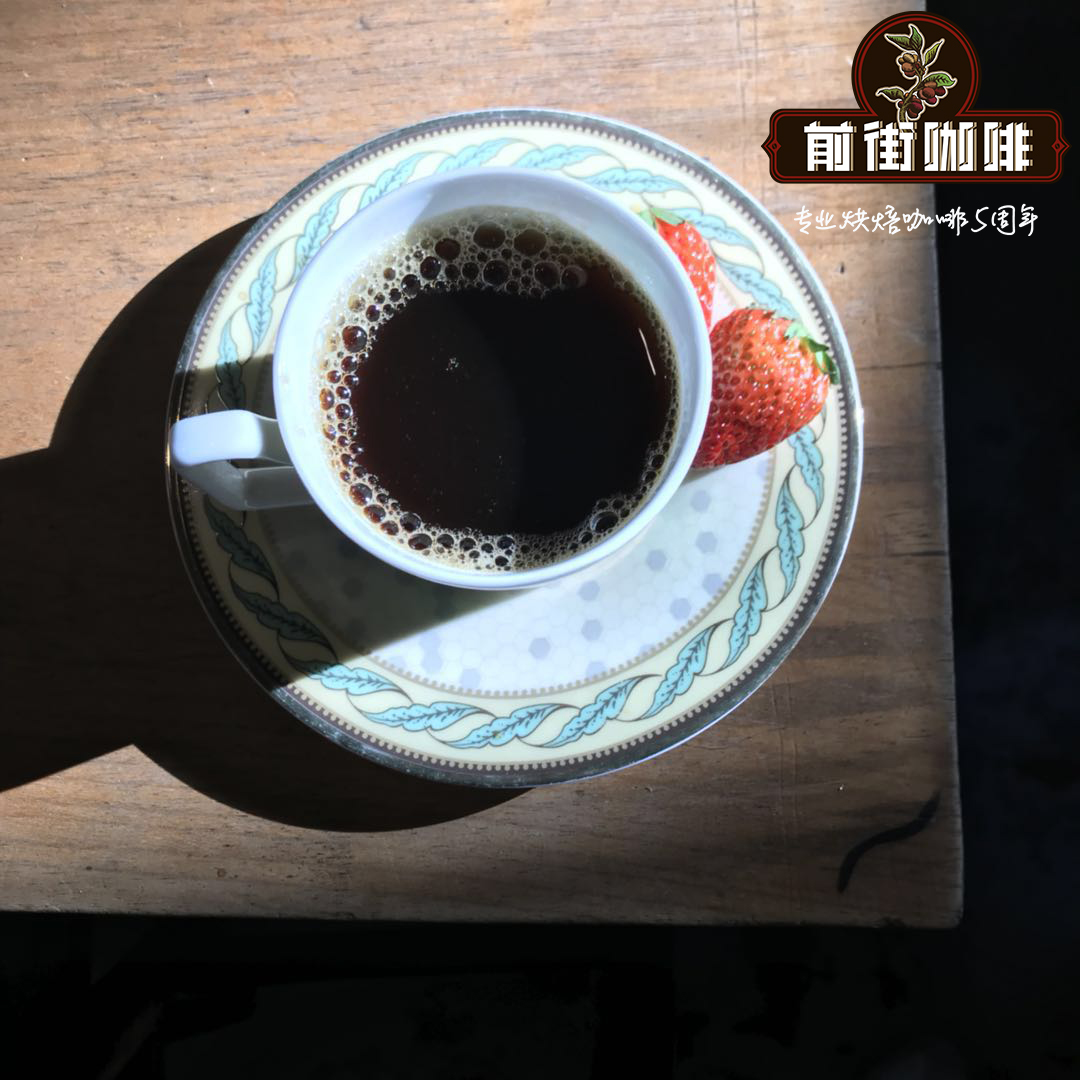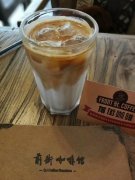Introduction of Blanca Coffee producing area in Costa Rica _ COE winning batches of Black Honey Coffee treatment Story

Professional coffee knowledge exchange more coffee bean information please follow the coffee workshop (Wechat official account cafe_style)
This is a black honey-treated coffee from the Brunca region. That producing area is new to boutique coffee buyers all over the world. It is not the famous Tarrazu, nor the West Valley that sprang up in recent years, nor the Central Valley that has been planted for 150 years.
The town of Rivas in the producing area of "Brunca" (Rivas)
A remote coffee-growing area located about 150km southeast of San Jose, Costa Rica, through an altitude of 3000m / m, which is high enough to cause tinnitus / dizziness.
A Costa Rican coffee producing area that has always been regarded as "unable to produce good coffee".
Central America. Costa Rican coffee
[award record: 2015 COE Award winning Manor]
Costa Rica Brunca Finca La Guaca Catuai Black Honey
Bran card
Rivas disposal site, Treasure Manor.
Black honey
BlackBerry, dark fruit notes, sweet spices, honey, peaches, round taste, rich sweet and sour taste
Today, let's talk about one.
A story about the love and growth of coffee
2015
Costa Rica's COE Cup, ranked 33rd, is a black honey-treated coffee from Brunca.
That producing area is new to boutique coffee buyers all over the world.
It is not the famous Tarrazu.
Nor is it the West Valley that has sprung up in recent years.
What's more, it is not the Central Valley (Central Valley) with a history of 150 years.
The town of Rivas in the producing area of "Brunca" (Rivas)
A remote Costa Rican coffee producing area is located about 150km southeast of San Jose, Costa Rica, and has to pass through a high altitude area of 3000m above sea level, which is enough to cause tinnitus / dizziness.
A producing area that has always been regarded as "unable to produce good coffee".
Treasure Manor (La Guaca), which has been in operation for about 30 years, was created by the current owner Regulo Gerard (Riguro Gillard).
It used to be a hillside for animal husbandry, with a lowest point of about 1200 meters and a maximum of 2000 meters upward.
He started growing coffee from the lowest point and divided it into five coffee plantations according to altitude and slope direction.
Over the next 20 years, he sold coffee berries to the town's processing plant.
Like most coffee farmers at that time, they devoted all their efforts to taking care of coffee trees and their families.
However, this kind of income is not very good and unstable at the same time.
Until the trough of international coffee futures prices in 2002, Costa Rica began the "micro-processing plant revolution". Many farmers hope that their micro-batches of beans will be recognized by international boutique buyers and break away from the terrible commercial coffee price cycle forever.
In the absence of anyone to imitate and no international boutique buyer, the owner resolutely decided to invest tens of thousands of dollars to buy a set of "Penagos" micro-honey processing equipment (and named this new microprocessing plant-- Rivense Rivas processing plant), betting the future of the whole coffee business and family on an unknown.
But this is not an impulsive decision!
He loves and delves deeply into the agronomy and treatment of coffee.
Like bean hunters / bakers / baristas all over the world
Delve into transportation / preservation / baking / blending / brewing / appreciation. All kinds of important links, etc.
Soon, he mastered the secret of honey treatment!
As for how to maintain the health of coffee trees and produce coffee seeds with rich contents, it is already very familiar to him.
But the cruelty of reality is:
Before 2015, after the harvest at the beginning of each year, it is very difficult for Treasure Manor to find discerning buyers and are willing to buy these excellent beans at a reasonable price.
But he's not depressed. Is to continuously refine their own agricultural methods and treatment methods.
And began to participate in the COE competition in Costa Rica.
From being able to make it through the first round of domestic selection, and then only one winner short of the international selection in 2014.
Finally, I won the 33rd place in COE in 2015!
They also had their first visit to the SCAA Baker Camp in 2016, and that was the first visit by SCAA to the Brenka production area, and the manor has been connected with international boutique coffee buyers ever since!
When international buyers visited them for the first time in March 2016
The manor is short of funds and resources for a long time.
The warehouse is very small and crude / the equipment such as shelling and refining is old /
Some of the beans can only be put under the canopy to keep out the wind, rain and sun. Very bewildered.
Seeing this situation, when the two sides discussed the price, the buyer made a significantly higher offer than other excellent estates in Costa Rica.
There is only one condition attached to such a price:
It is hoped that they can make good use of this income to invest in expanding warehouses and upgrading refined processing equipment.
I sincerely hope that this kind of support can not only stabilize bilateral relations, but also stabilize and increase the quality of the manor in the next few years, so as to take more orders from international coffee makers.
Thus sustainable and even the development of better boutique coffee production capacity!
And the manor lived up to expectations, and in just one year, they doubled the warehouse size.
Tens of thousands of dollars of refining equipment has been invested and replaced with another honey processing equipment with higher production capacity.
A greenhouse with dried honey for coffee has been added, and a new two-story guest building has been built for international visitors.
The buyer visited the manor alone in 2016, but in 2017 there was a hustle and bustle from Northern Europe / the United States / Canada. Foreign visitors from other countries!
Some even Long Stay, who lived in the guest house for several weeks, helped to learn the various aspects of coffee bean processing during the harvest season.
Amazingly, even Blue Bottle coffee, the third wave of boutique coffee pioneers in the world, has also excavated this estate / processing plant, expanding the purchase volume of the Rivas processing plant year by year!
Looking at the great progress they have made over the past year, I really feel the beauty of this career from the bottom of my heart. Let's taste the "treasure" from Costa Rica.
END
Important Notice :
前街咖啡 FrontStreet Coffee has moved to new addredd:
FrontStreet Coffee Address: 315,Donghua East Road,GuangZhou
Tel:020 38364473
- Prev

Washed Costa Rican Tara Pearl Coffee beans how to make Santa Monica Black Pearl Coffee Flavor
Professional coffee knowledge exchange more coffee bean information please follow the coffee workshop (Wechat official account cafe_style) [manor] Santa Monica Manor Santa Monica [treatment] washing Full-Washed [roasting] moderate roasting Medium Roast [beans] Kaddura and Kaduai Caturra and Catuai [origin] Costa Rica COSTA RICA [production area]
- Next

How do you drink roses in summer at Donna Manor, Costa Rica? recommended by Costa Rica COE bidding for coffee beans
Professional coffee knowledge exchange more coffee bean information please follow the coffee workshop (Wechat official account cafe_style) introduction: Brumas processing Plant (Beneficio Brumas del Zurqui) was founded by the Rodrguez Carballo family in 1880 and is now managed by Juan Ramn Alvarado Rodrguez, Donna Clomancia Manor (Finca Dona)
Related
- Detailed explanation of Jadeite planting Land in Panamanian Jadeite Manor introduction to the grading system of Jadeite competitive bidding, Red bid, Green bid and Rose Summer
- Story of Coffee planting in Brenka region of Costa Rica Stonehenge Manor anaerobic heavy honey treatment of flavor mouth
- What's on the barrel of Blue Mountain Coffee beans?
- Can American coffee also pull flowers? How to use hot American style to pull out a good-looking pattern?
- Can you make a cold extract with coffee beans? What is the right proportion for cold-extracted coffee formula?
- Indonesian PWN Gold Mandrine Coffee Origin Features Flavor How to Chong? Mandolin coffee is American.
- A brief introduction to the flavor characteristics of Brazilian yellow bourbon coffee beans
- What is the effect of different water quality on the flavor of cold-extracted coffee? What kind of water is best for brewing coffee?
- Why do you think of Rose Summer whenever you mention Panamanian coffee?
- Introduction to the characteristics of authentic blue mountain coffee bean producing areas? What is the CIB Coffee Authority in Jamaica?

